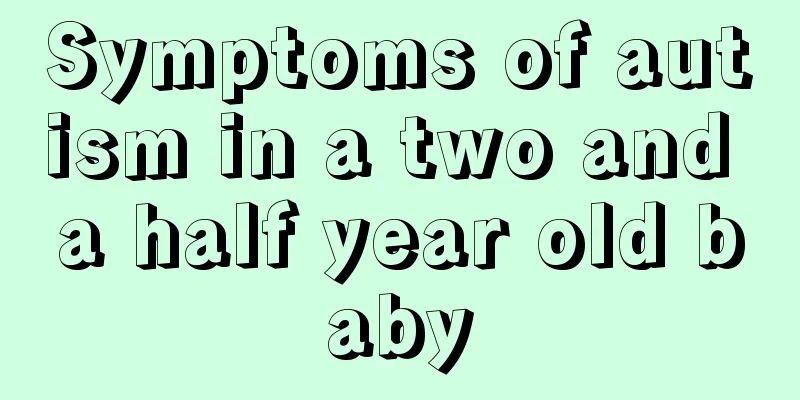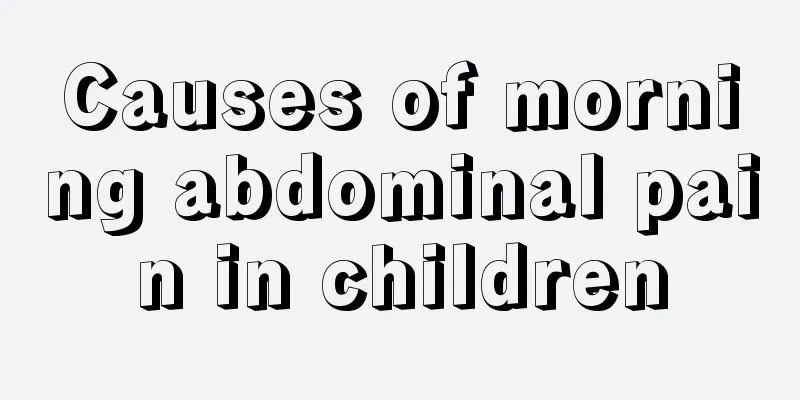Symptoms of autism in a two and a half year old baby

|
Newborn babies are developing in all aspects of their bodies, including the complete development of their brains. By the age of two and a half, they should have learned to communicate with their friends or mothers. If some children are afraid of getting along with others, or do not like to communicate, then mothers should pay attention, as two and a half year old babies may have autism. The following are some specific examples of what a child might look like when they have autism. The symptoms of autism in children are more obvious: 1. Indifference to others: Autistic children are unwilling to pay attention to their parents in the early stages and will only go to their parents when they want to eat something. They are not clingy or pestering adults like other children, nor do they like adults to tease them or play with them. They also have wandering eyes and do not look others in the eye. They are also very indifferent to their peers, unwilling to make friends, and prefer to play alone. 2. Language disorder: The most obvious feature of autism in the early stages is the inability to speak. Most children cannot speak until they are two or three years old. Even after they can speak, they pronounce words unclearly, speak too fast, with a tone that is too high or too low. They say individual words instead of complete sentences and like to imitate other people's speech. They also often scream or say words that are incomprehensible to others. 3. Mood swings: Autistic children also show mood swings in their early stages. Sometimes they suddenly lose their temper, and at other times they remain expressionless and very quiet. They react strongly to small changes or small stimuli in life. For example, they will cover their ears with their hands to a very small sound, and they appear very excited or fearful of certain smells, colors, shapes, etc. (1) Being lonely and isolated, and unable to establish normal connections with others. That is, lack of interaction with people. The tendency to communicate. Some children show this trait since infancy. For example, they are not close to their parents since childhood, and do not like to be held. When someone wants to hold them, they do not stretch out their hands to show the posture of expecting to be held. They do not take the initiative to play with other children. When others want to play with them, they hide away and do not respond to calls. They always like to act alone and play by themselves. Although some children do not show that they reject others, they do not know how to interact with other children, that is, they lack social interaction skills. For example, when looking for other children, they either suddenly pat the child, pull the child, or suddenly go over and hug the child, and then leave. It seems that patting or pulling the child is not for the purpose of making contact but just an action, or there is only a form of contact without the content and purpose of making contact. Their loneliness is also manifested in their indifference to things around them. They seem to be deaf and blind. They do whatever they want without any scruples and as if no one is around. Whatever happens around them seems to have nothing to do with them and it is difficult to arouse their interest and attention. Their eyes change frequently and they do not easily stay on things that others ask them to pay attention to. They seem to live in their own little world. In addition, they do not look at others or even avoid looking at others. Their eyes are also wandering during normal activities. When looking at people, they often squint, glance sideways or with peripheral vision. They rarely look directly at others, rarely smile, and never say hello to others. (2) Speech disorders are very prominent. |
<<: What to do if your two-year-old baby gets angry
>>: The dangers of anemia in two-year-old babies
Recommend
Why does a child have a headache when running?
Running, as a healthy form of exercise, is accept...
How to avoid scars on children's faces
Children are very naughty. They often like to tou...
Causes of elevated lactate dehydrogenase in children
What is elevated lactate dehydrogenase in childre...
Seven-month-old baby's ears are itchy and he keeps scratching them
The seven-month-old baby is very cute and playful...
What to do if your baby always bites his lower lip
As a new mother, there are many things that she n...
What to do if your child is too introverted and timid
Many parents now have a common worry, that is, th...
Effects of breath-holding spells on the brain
Everyone knows that children like to cry a lot. T...
How should scrotal hernia in children be treated?
It is very normal for newborns to have hernias. I...
Six month old baby crying at night
When babies are young, due to their obvious mood ...
What is the situation of vomiting in a three-month-old baby?
Many new mothers are troubled by a problem: their...
What should we do if children have congenital malformations?
Every parent hopes that their children will be he...
Cold, cough and anti-inflammatory medicine for a 10-year-old child
Children are very important to their parents. Par...
7 kinds of food that babies should not eat on an empty stomach
The baby's gastrointestinal function is relat...
What to do about separation anxiety in children?
What causes separation anxiety in children? Nowad...
What should I do if I have ADHD?
Children suffering from ADHD bring great troubles...









